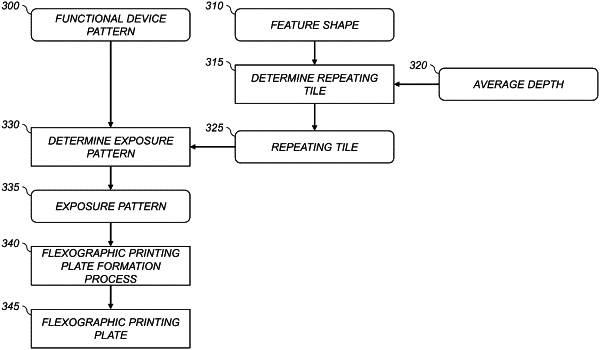| CPC G03F 7/2012 (2013.01) [B41C 1/05 (2013.01)] | 23 Claims |

|
1. A method for fabricating a flexographic printing plate for printing image patterns, comprising:
receiving an image pattern including one or more uniform image regions;
determining a repeating tile for forming a pattern of raised features in regions of the flexographic printing plate corresponding to the one or more uniform image regions of the image pattern, including
defining a tile size for the repeating tile having an area of at least 100 square pixels;
defining a feature shape; and
defining the repeating tile including a plurality of the feature shapes, wherein the feature shapes are positioned in a pattern of pseudo-random feature locations within the repeating tile, and wherein the feature shapes cover between 2-30% of the area of the repeating tile;
determining a plate formation pattern corresponding to the image pattern, wherein the repeating tile is applied in a tiled arrangement to the one or more uniform image regions within the image pattern; and
using the determined plate formation pattern to form the flexographic printing plate using a flexographic printing plate formation process, wherein the plate formation pattern is transferred to the flexographic printing plate such that regions of the flexographic printing plate corresponding to the one or more uniform image regions of the image pattern include a pattern of raised features in positions corresponding to the feature locations in the repeating tile;
wherein the one or more uniform image regions within the image pattern are identified by automatically analyzing the image pattern to detect elements of the image pattern and determine associated element dimensions, and where any element having a minimum element dimension that exceeds a predefined threshold dimension is designated to be a uniform image region.
|